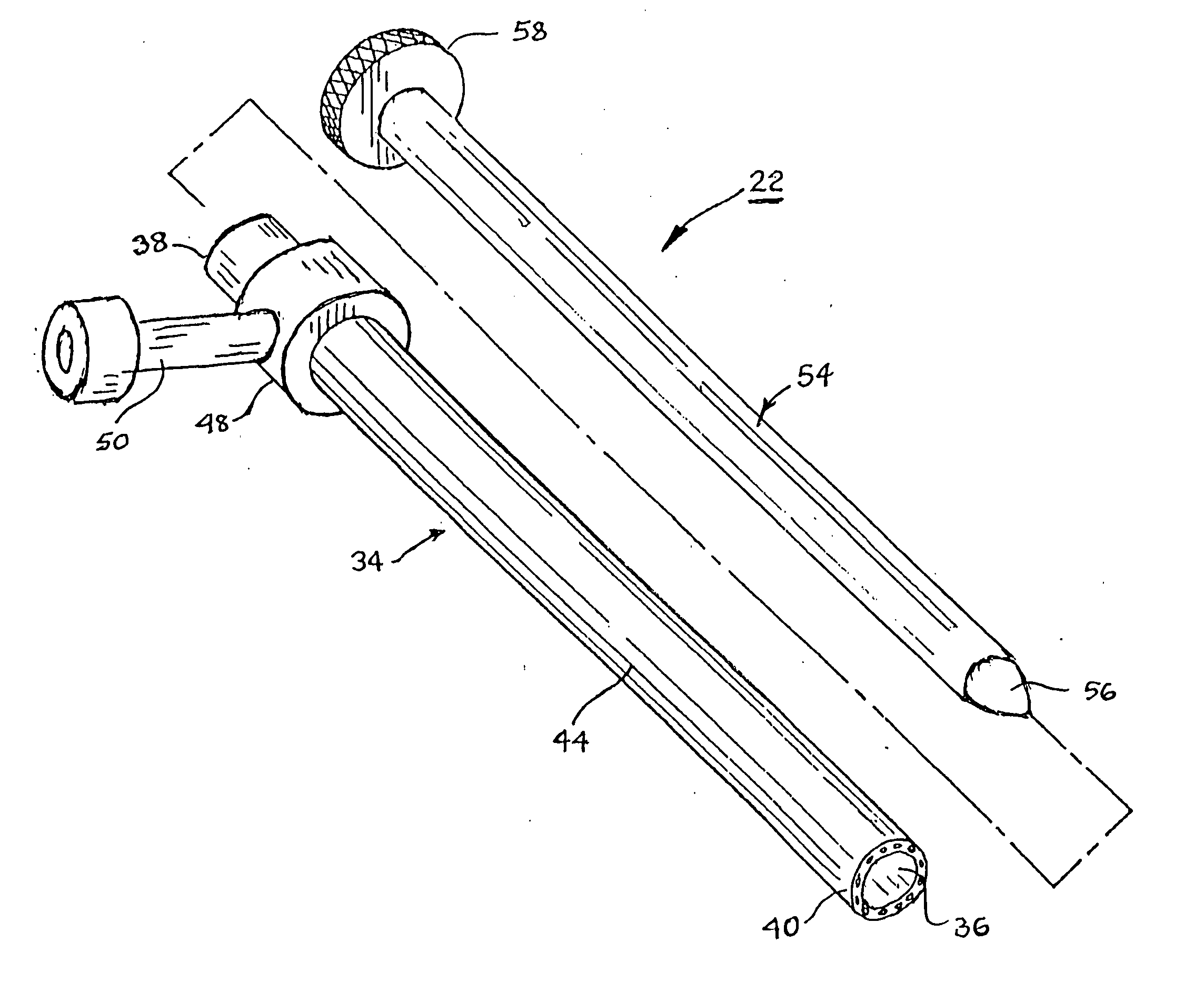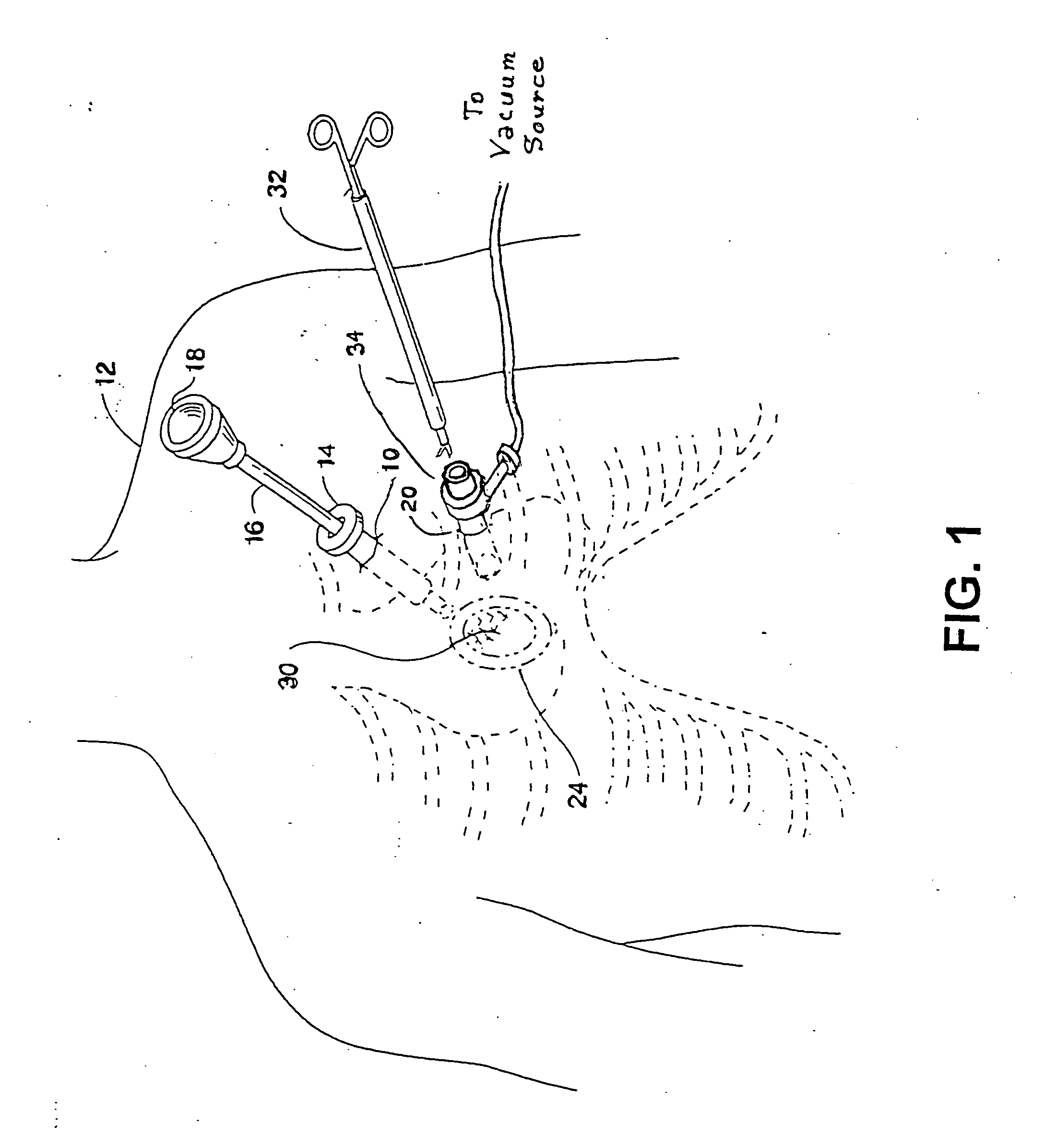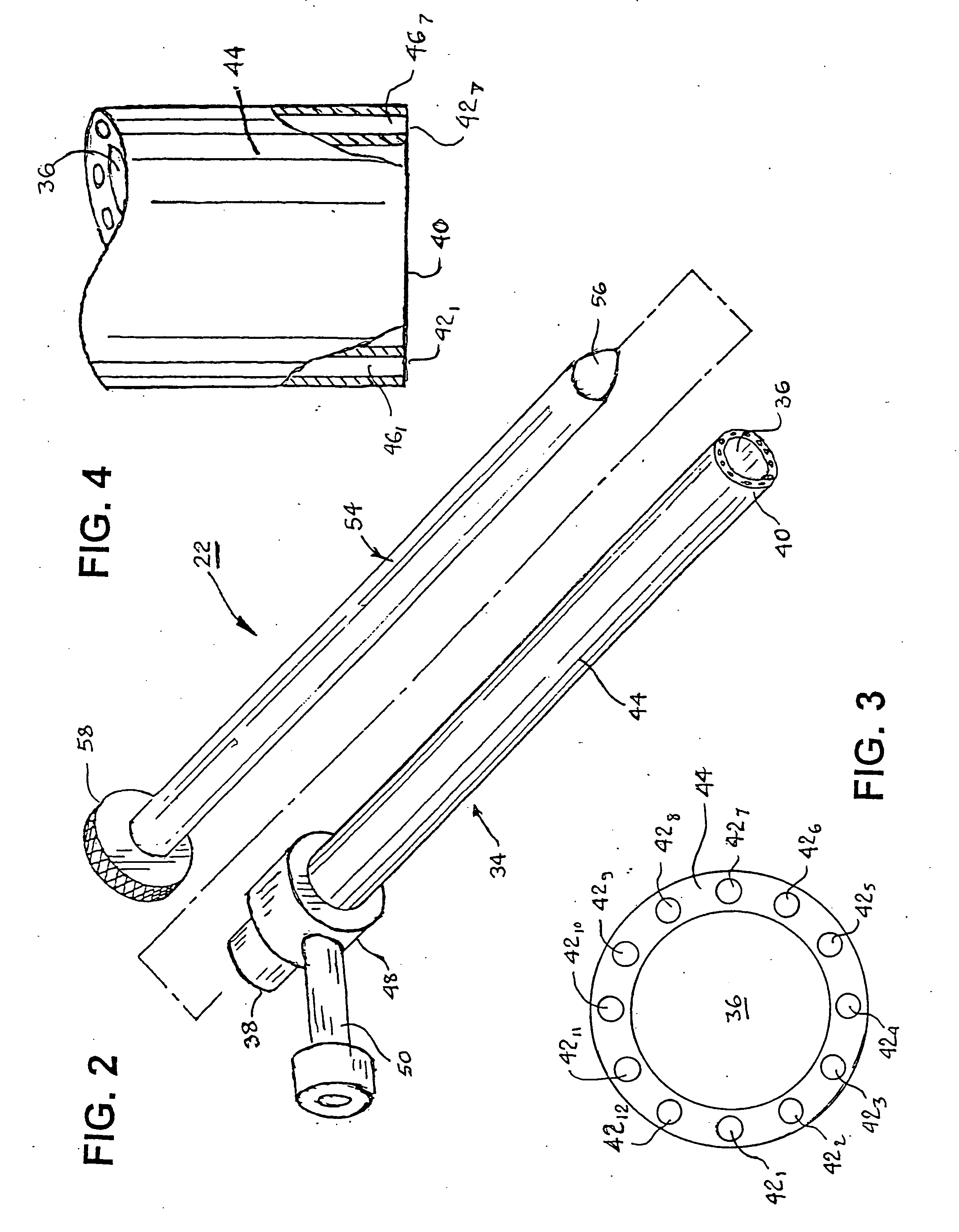Anatomical space access tools and methods
an anatomical space and access tool technology, applied in the field of anatomical space access tools and methods, can solve the problems of unattractive scars, carries additional complications, and thoracic muscle and rib injuries, and achieves the effect of more robust fixation
- Summary
- Abstract
- Description
- Claims
- Application Information
AI Technical Summary
Benefits of technology
Problems solved by technology
Method used
Image
Examples
Embodiment Construction
[0036] In the following detailed description, references are made to illustrative embodiments of methods and apparatus for carrying out the invention. It is understood that other embodiments can be utilized without departing from the scope of the invention. Preferred methods and apparatus are described for accessing the pericardial space between the epicardium and the pericardium as an example of accessing an anatomic space between an inner tissue layer and an outer tissue layer, respectively.
[0037] The access to the pericardial space in accordance with the present invention facilitates the performance of a number of ancillary procedures. For example, the procedures include introducing and locating the distal end of a catheter or guidewire or an electrode of a cardiac ablation catheter or a pacing lead or a cardioversion / defibrillation lead within the pericardial space and attached to the epicardium or myocardium. Other possible procedures include performing a coronary artery anast...
PUM
 Login to View More
Login to View More Abstract
Description
Claims
Application Information
 Login to View More
Login to View More - R&D
- Intellectual Property
- Life Sciences
- Materials
- Tech Scout
- Unparalleled Data Quality
- Higher Quality Content
- 60% Fewer Hallucinations
Browse by: Latest US Patents, China's latest patents, Technical Efficacy Thesaurus, Application Domain, Technology Topic, Popular Technical Reports.
© 2025 PatSnap. All rights reserved.Legal|Privacy policy|Modern Slavery Act Transparency Statement|Sitemap|About US| Contact US: help@patsnap.com



